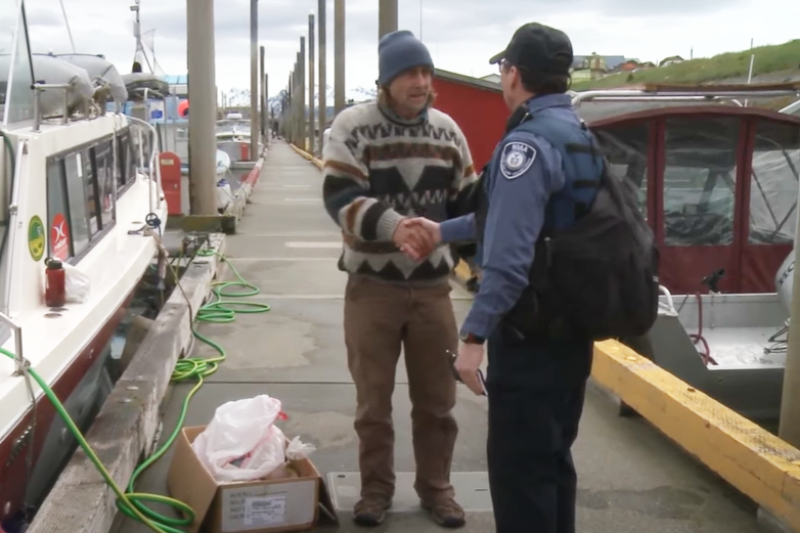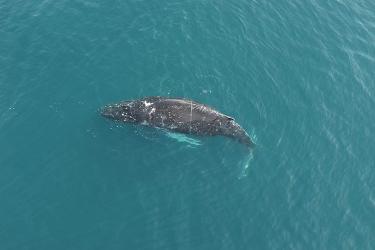Productive, resilient fisheries that support thriving communities and a strong blue economy are achieved through management laws and regulations.
“Fisheries sustainability is only as good as compliance with the rules we have created to maintain it,” said NOAA Fisheries scientist Craig Faunce, Alaska Fisheries Science Center. “And compliance comes with transparency and building trust with the fishing industry. To do this, the agency needs to do a better job of explaining the rationale behind the regulations to fishermen so they are more likely to comply with them.”
A new NOAA study takes a major step toward greater transparency, accountability, and efficiency in fisheries monitoring and enforcement. The study is the first to look at trends in compliance over time and what drives them. Fisheries observers play a critical role in ensuring that U.S. fisheries are well managed. Observers collect biological data critical for setting sustainable catch limits. They also support NOAA's Office of Law Enforcement by reporting potential violations of laws and regulations.
Researchers analyzed 21 years of reported violations from the North Pacific observer program and how they were addressed. Their findings provide insight to help build a more collaborative, compliant culture in support of sustainable fisheries.
“If we’re not clear about what the real problems are, we can’t address them effectively. Our study shows what’s been happening over the past two decades,” said Faunce, “Now we can focus on what needs to be done.”
“With this information we can look at the trends and work together with the fishing industry to improve compliance,” said co-author Jaclyn Smith, Special Agent, NOAA's Office of Law Enforcement. “The ultimate goal is voluntary compliance. To achieve that, everyone—managers, observers, fishermen, and law enforcement —needs to work together.”
Trends: An increase in Reports, but Not in Violations
The study found that there has been a large, gradual increase in potential violations reported by observers over the 21 year period, and a small percentage of observer reports resulted in penalties, for a variety of reasons.
Drivers: New Regulations and Changes in Focus
The team identified three drivers of the increase in reported potential violations:
- Passing of new regulations that often require observers to report relatively minor offenses (e.g., those related to record keeping and reporting)
- Reaction to a major event—for example, there might be a renewed focus on existing safety regulations after a death at sea
- Improvements to the way data are collected and recorded
While Alaska fisheries have earned a reputation as well managed, the study found that this reputation has come at a cost to fisheries monitors and enforcement. Numerous regulations have been passed in the past 15 years that increase the reporting burden on observers. Each new regulation increases the number of potential violations for observers to report and for enforcement to review.
In addition, the study found that in recent years enforcement actions have dropped compared to earlier in the study period. The majority of incidents reported to the Office of Law Enforcement are addressed, but enforcement actions or prosecution aren't pursued because of a combination of the following:
- Increased awareness of potential infractions and subsequent voluntary compliance after minor violations are recognized by operators
- Reports that provide insufficient evidence of a violation, or no evidence at all, that do not require enforcement response
- A greater number of regulations on which to report
- Insufficient enforcement resources to address all reports
”We receive hundreds of observer statements for hundreds of different potential violation types. Due to limited resources, we must prioritize our outreach and focus on investigating the most important and often complex cases such as sexual assault or sexual harassment of an observer, or attempts to interfere with their ability to conduct their duties,” Smith said. “It would be helpful if regulations were more streamlined.”
”Because the number of reports has quadrupled, the system is swamped,” Faunce said. “Now we have to figure out what to do about it.”
Solution: Fishing Industry Collaboration
The solution to these problems, Smith and Faunce say, is achieving voluntary compliance through industry efforts and agency transparency and collaboration.
“The Office of Law Enforcement’s outreach to industry is really important,” Smith said. “We’re working hard to maintain a collaborative, cooperative, positive working relationship with fishermen.”
“From our study it looks like more regulations won’t result in greater compliance. Sustainable fisheries is not just about having regulations and strong governance, because we lack the resources to address every potential crime. We need to do what we can to build a culture of compliance,” Faunce said. “Industry needs to trust and believe in the value of the regulations. That trust comes from being transparent about what the problems are and accountable for what we are (or are not) addressing. We hope this study achieves that. We need to let industry know that both they and we are accountable.“
See the full research article in Marine Policy.







